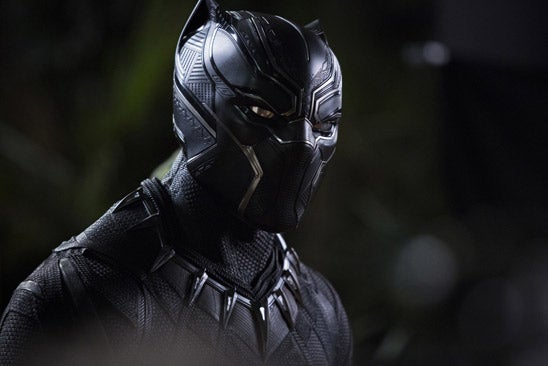It’s a superhero movie. So during opening week of Black Panther, moviegoers entered theaters for reasons more predictable than the plot. To turn off the cellphones and turn on the imagination. To escape work, school, and routines. To enter a bubble of wonder. When the film was over, the crowds walked out with a question that privately lingers every time we exit a fantasy: is it … possible?
Sourced from a meteorite that landed in Wakanda many centuries ago, Vibranium provides the superpower in the main character’s suit, absorbing energy and redistributing it.
The drone used for transportation in Black Panther? Sure, it’s possible. The flowers that are said to take on unusual properties while basically growing in a cave? Perhaps. But what about Vibranium, the fictional metal used in Captain America’s shield that hails from Wakanda, the fictional African nation at the heart of Black Panther?
Sourced from a meteorite that landed in Wakanda many centuries ago, Vibranium provides the superpower in the main character’s suit, absorbing energy and redistributing it — a nice feature when it’s time to fight the bad guys who want to steal the precious metal.
But how far-fetched is this Vibranium?
“I’d never heard of Vibranium until I was asked to do this interview,” says UCF Professor of Engineering Surya Challapalli, who has studied metals for 50 years. “We didn’t have Marvel comic books when I was growing up in India. But when I researched Vibranium this week, I thought, ‘Hmm, it is actually similar to utopium.’ ”
Utopium is yet another fictional metal. Challapalli himself dreamed up the concept more than a decade ago. He first introduced it to a UCF class as a way to inspire creative and critical thinking. Utopium (named for the perfect world of Utopia) would be strong, light, stiff, corrosion-free, and able to withstand fracturing and high temperatures. It would be Vibranium-ish, only much more accessible and much less expensive.
“The challenge is to determine how its conflicting properties could work together, like high strength and ductility [fracture resistance],” says Challapalli. “I would say it’s possible that someday there could be something like utopium. Not anytime soon, but who knows about the future?”
Challapalli points to recent advances in metallurgy and materials science, unrealistic concepts a few decades ago that are now reality. Things like nanotechnology and metallic glasses and quasicrystals and Kevlar and graphene.
“Some people many years ago figured out how to make steel stronger through ‘quenching,’ where it’s heated and quickly cooled,” says Challapalli. “I So maybe someone could figure out a roadmap for [vibranium]. However, it would not be naturally-occurring.”
“It’s amazing to think that nanotechnology and Kevlar are now considered commonplace,” Challapalli says. The key to making them happen? Not archaeology or rocks from outer space. It is all about ingenuity.
“Think about it. Some people many years ago figured out how to make steel stronger through ‘quenching,’ where it’s heated and quickly cooled. So maybe someone could figure out a roadmap for utopium. Unlike Vibranium in the movie, however, it would not be naturally-occurring.”
That’s one of the issues Costas Efthimiou, UCF associate professor of physics, has with Black Panther. Efthimiou created a class at UCF in 2002 called Physics and Film. It became one of the most popular physics classes on campus because of the critical application of science and movies. Students showed up and paid attention.
“The movie writers would not have passed my class,” jokes Efthimiou, who watched a pre-screening of Black Panther with his 11-year-old son (he liked the movie). “I do not go to movies to say ‘Aha! I’ve got you!’ And I understand artistic freedom and fantasy. But I do think the science could have been closer to reality without changing the story.”
Like Challapalli, Efthimiou says for the sake of a little authenticity Vibranium should not be a written as a pure metal derived from an enormous meteorite.
“For one, at that size it would have obliterated the area around the crash point and have created global devastation on Earth for a long, long time. If it had to be a meteorite, though, it should have been composed of a new alloy, based on the known elements, or a mix of alloys in the meteorite with a variety of properties. Wakadians could reproduce them and stay undetected — almost. No advance in technology goes completely unnoticed from the rest of the world.”
His critique of Black Panther reminds Efthimiou of why he uses movies in his physical science classes. “It’s a great way to help students think their way through the believable and unbelievable.”
That, according to Efthimiou, is what so many people misunderstand about science. It is not static or boring. It stretches our minds. It’s what allows the unbelievable to become the believable. Through research, experimentation, and reality.
“In science, unless we do not think of something unimaginable,” says Challapalli, “we will not pursue something better. Culturally, we move from one mystery to another. That’s how our imaginations work and that’s how science works, too.”
So maybe not Vibranium. But maybe utopium? We can imagine.




